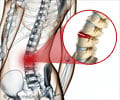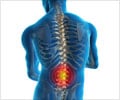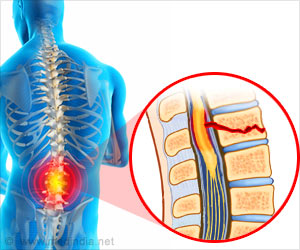- People with spinal cord injuries suffer from paralysis and numbness
- Other complications include chronic pain and bladder dysfunction, that can be severe and disabling
- Human stem cell implants within the spinal cord may give relief from chronic pain and bladder problems.
- Quality of life for spinal injury patients will improve, as a result.
Lead Up To The Study
It is believed that some of the complications following spinal cord injury may be due to a deficiency of inhibitory neurotransmitter gamma amino butyric acid (GABA) in the spinal cord. Using human embryonic stem cells capable of differentiating into medial ganglionic eminence (MGE)-like cells, which produce GABA, may help reduce the severe disability caused chronic pain and bladder dysfunction in such patients.This study involved a joint effort between senior authors Arnold Kriegstein, Director of the Developmental and Stem Cell Biology Program at the University of California, San Francisco (UCSF), and Linda Noble-Haeusslein, a professor in the Departments of Neurological Surgery and Physical Therapy and Rehabilitation Science at UCSF. It addressed the issues of neuropathic pain and bladder dysfunction, both of which are at least partly attributed to overactive spinal cord circuits.
“We reasoned if we could take inhibitory neurons and directly place them into the spinal cord in the regions that are overactive, they might integrate into those circuits and suppress the activity,” says Kriegstein.
Details Of The Study
The GABAergic neural precursor cells (MGE-like cells) were placed within the spinal cords of mice two weeks after inducing spinal injury, where they could differentiate into GABA-producing neurons and form synaptic connections.
Testing The Efficacy Of Human Stem Cells In Mice
Six months after transplant, animals exhibited markedly reduced pain sensitivities. Grooming and scratching behaviors were also evaluated, as decreased GABA in the spinal cord can also lead to a pathological itch (pruritus). The investigators found that mice receiving the stem cell transplants showed a reduced overgrooming compared to controls.
“The fact that these cells were implanted in the spinal cords two weeks after injury is also important to note,” says Alpa Trivedi, a researcher at UCSF and co-first author of the study. “Many of the current Phase I trials for spinal cord injury are run in the acute phase, which is right after injury. But the vast majority of people with spinal cord injuries are the chronic patient population, and a treatment that might work for them would capture a larger number of patients who are really in need of better treatments.”
About Spinal Injuries
Spinal cord injuries result from a sudden impact to the spine that may result in crushing or compression of the vertebrae.
Spinal injuries are usually characterized by paralysis and loss of sensation or numbness below the level of injury. The extent of injury determines the degree of paralysis and numbness.
Additional features include
- Occurrence of a chronic neuropathic pain related to nerve injury and damage,
- Loss of bladder and bowel control
- Increased vulnerability to respiratory infections
The quality of life for spinal injury patients thus remains challenging, even with treatment.
Scope Of This Study In Humans
Though more research needs to be done, the employment of human stem cells instead of mouse stem cells in their study is a step forward.
“Chronic pain and bladder dysfunction remain significant quality-of-life issues for many people with spinal cord injuries. Inhibitory cell-based neuro-therapy is a new approach and has shown promise to date in early animal studies, warranting further development,” says Cory Nicholas, a co-first author.
In conclusion, the researchers hope that their work would result in a longer lasting or even a permanent solution to spinal injury patients, especially since the presently available modalities of treatment are not very satisfactory.
References
- NINDS Spinal Cord Injury Information Page - (http://www.ninds.nih.gov/disorders/sci/sci.htm)
- Spinal cord injury - (http://www.mayoclinic.org/diseases-conditions/spinal-cord-injury/basics/symptoms/con-20023837)
















